The views of the Moon generated by Earth and Moon Viewer sometimes seem to “wash out” the details of topography, especially near the equator and the terminator (day/night boundary). This is due to the fact that the images are generated based on a global albedo (reflectance/brightness) map, and take into account neither topography nor the local altitude of the Sun. For a fully-illuminated hemisphere, the results strongly resemble telescopic views. Here's the Full Moon as seen through a real telescope, compared with the equivalent view from Moon Viewer. The photograph was made at Lick Observatory, and has been reduced in size for use here. The original high-resolution image may be downloaded.
| Full Moon | |
|---|---|
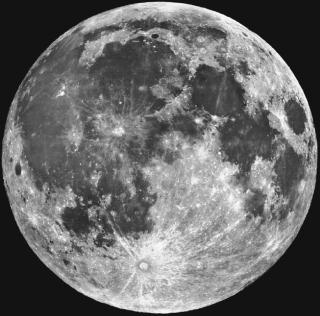 |
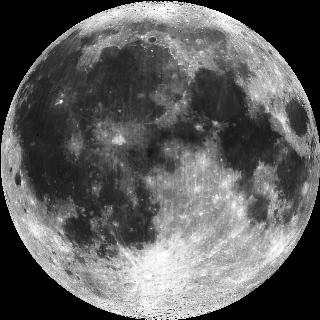 |
| Telescopic View | Moon Viewer Image |
The limited resolution of the Moon Viewer database results in the loss of some fine detail, but there are no great discrepancies in the appearance of the images. The same turns out to be true for any fully-illuminated hemisphere. Here is the Western Hemisphere of the Moon, half invisible from the Earth, as imaged by the Jupiter bound Galileo spacecraft on its gravity boost fly-by of the Earth. Mare Occidentale, visible just left of the centre of the hemisphere, is entirely on the geometric far-side of the Moon and visible only at the most favourable librations. This image shows roughly half the side visible from Earth and half the far-side, illustrating how the morphology of the near-side, with its many maria differs from the heavily cratered highland terrain of the far-side.
| Western Hemisphere | |
|---|---|
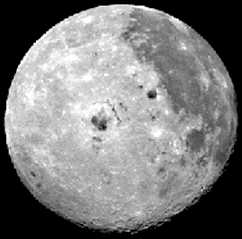 |
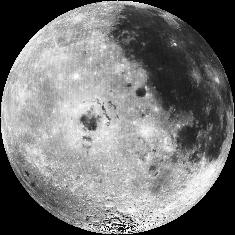 |
| Galileo Image | Moon Viewer Image |
At left, the Moon image returned by Galileo is shown, while the image at right is a Moon Viewer-generated view of the same hemisphere. Other than darkroom judgement calls about brightness and contrast, the images are strikingly similar. It's when the Moon is not fully illuminated (and hence the terminator is visible) that the shortcomings of a pure albedo map become apparent, as the following comparison between another view of the Moon from Galileo and Moon Viewer's rendering of the same viewpoint and illumination.
| Partially Illuminated Moon | |
|---|---|
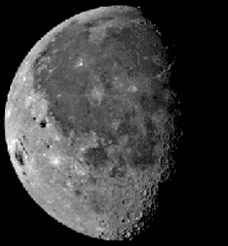 |
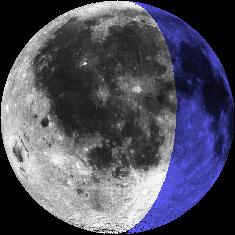 |
| Galileo Image | Moon Viewer Image |
At high sun angles, toward the left of the image, everything looks fine, but all the detail near the terminator is absent from the Moon Viewer image, since it does not take terrain elevation and Sun angle into effect. (Of course, showing the night side of the Moon in blue is also unrealistic, but this is deliberate; it allows you to see detail on the night side.)
Using an albedo map and ignoring the effects of elevation and Sun angle thus leads to lost detail near the terminator, especially in the lunar highlands and most of the far side where there is little intrinsic albedo difference and most of observed detail results from terrain features. For a better rendering of rough terrain, select the Topography image database, produced from lunar terrain elevation information from the Clementine spacecraft.
Return to Earth and Moon Viewer